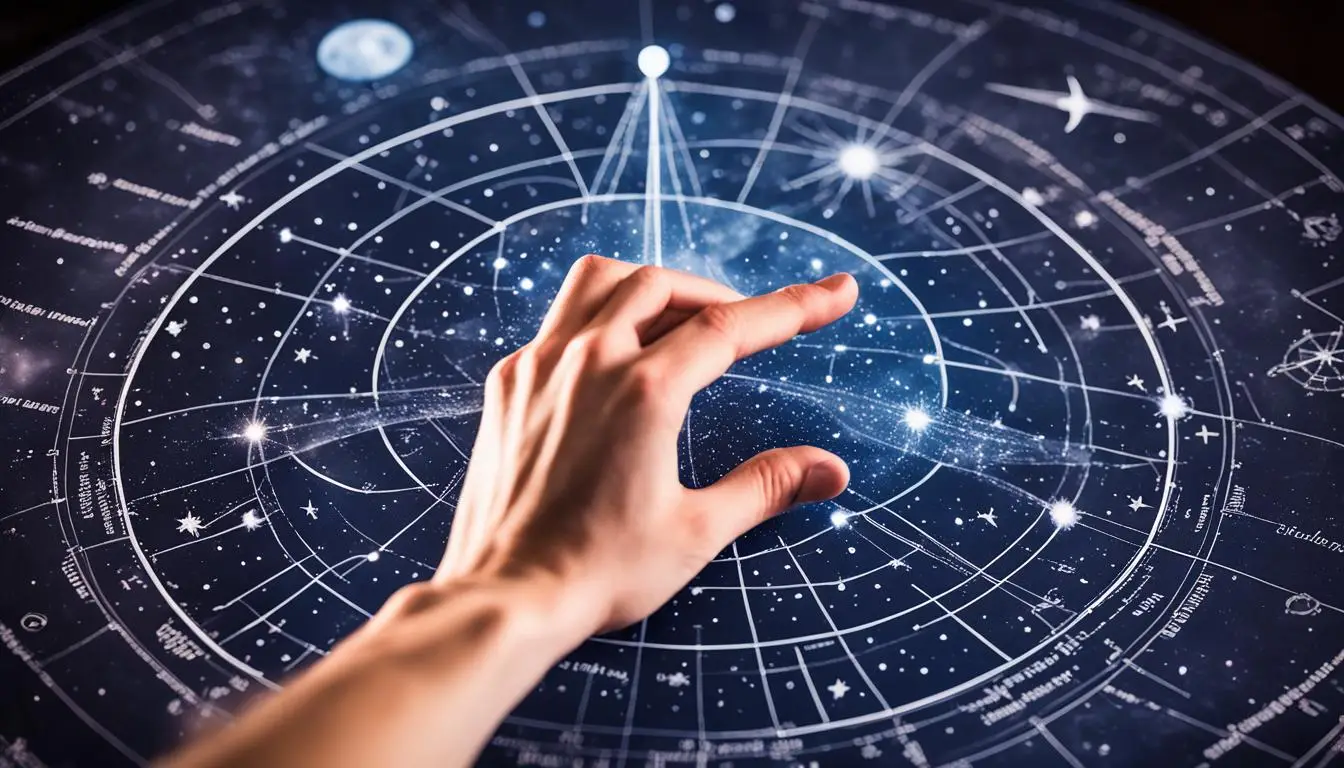Did you know there are precisely 88 constellations in our night sky? Constellations that have shaped our stories, behaviors, legacies, and many other things. As humans, we put a lot of faith in stars, which has shaped us since the very beginning of time. It initially started to understand the vast night sky, but then it evolved into something different. Many people learn how to read the stars, but everyone uses it not for various things.
No matter why you want to read the stars, the technique is the same. If I dive deep into why people learn how to read the stars instead of teaching them how to read the stars, we won’t have enough time with one post.
Check this out, too: First Stars in the Universe: The Start of Everything
It’s actually really easy to find the brightest star, Sirius, and use the Plough as a guide and start reading them.

Understanding the Night Sky
If you would like to read the stars and start taking meaning out of them, you first need to understand them – the constellations, individual stars, what they mean, and where they are. The night sky can seem huge and complex, but with the right tools, it becomes exciting.
First, get a star chart to start knowing where you are standing and which stars and constellations are visible. These guides are vital for finding constellations and spotting stars. The stars change with the seasons and where you are on Earth; that’s why not every star is visible every day.
You can maybe use mobile phone applications to detect which star and constellation is which. Also, allow your eyes to get used to the dark before trying to spot it yourself. You can also use astronomy apps on your phone with a red filter for quick checks without ruining your night vision.
Generally, starting with finding the important constellations can help you further. Start with easy ones like Ursa Major or Orion. These can help you navigate yourself better and find other stars and planets.
Essential Tools for Star Reading
Even the most professional people use tools to spot and read stars. When I say reading stars, I mean spotting which star is which and knowing where you are standing, which season it is, and what the future might look like in terms of the weather. For these, getting help from things like apps, software, binoculars, and other things can be a huge help.
Star Charts and Planispheres
Star charts are important in the sense of understanding the constellations and star patterns. There are free online tools like Skymaps.com. You can print monthly star charts or just use your phone to look at them while you are out and about. A planisphere is also useful – it’s a disc that shows constellations for any date and time. I got mine for about $10, and it’s been a great buy for quick sky references.
Astronomy Apps and Software
Digital star charts are nowadays the most popular method to read the stars. I use astronomy apps on my phone to spot stars and planets instantly. My top desktop software is Stellarium Planetarium, which is free and offers detailed sky simulations. These digital tools make learning about the stars easier, especially for beginners.
Binoculars and Telescopes
Optical gear isn’t needed at first, but it can improve your view of the sky. I started with 10×50 binoculars, which are great for the Moon and bright star clusters. When I got into astrophotography, I bought a small telescope. It has opened a new world of objects to explore and photograph.
How to Read the Stars

Learning how to read stars and star directions is a learning journey with a lot of curves. The first step is understanding star brightness. Stars are ranked on a scale called the magnitude scale. Lower numbers mean brighter stars. The brightest star we know, Sirius, has a magnitude of -1.5. See the “Understanding Star Brightness and Magnitude” section below for a more detailed explanation of the topic.
Looking for the Big Dipper is generally best when you are just starting out. It’s visible above 41 degrees north, covering the northern half of the US. This constellation is a great starting point for navigating around the stars. From there, you can find other stars and constellations.
In the Southern Hemisphere, Alpha Centauri is a key star to spot. It’s the closest star system to Earth and a good reference point. If you’re in either hemisphere, find Orion. The bright star Rigel sits in its lower right corner. Following Orion’s belt downward leads you to Sirius.
Star charts are great tools for both the Northern and Southern Hemispheres. They help you locate stars and constellations easily. I recommend using stargazing apps like StarChart or NASA’s app for interactive sky views. These digital aids make reading star patterns much simpler for beginners.
Navigating Constellations and Star Patterns
Humans have been using constellations to navigate themselves forever since we existed. These patterns are part of our history, belief system, and, of course, part of how to read the stars. Sailors used them to find their way, and now, we can use them to explore the stars from our own backyards.

Recognizing Major Constellations
Knowing the major constellations lets you explore the stars much more easily and much faster. Orion is a favorite of mine, visible in winter and early spring. Its three-star belt is easy to spot.
Cassiopeia, shaped like a ‘W’ or ‘M,’ is another key constellation. It’s always opposite the Plough, making it a useful guide in the night sky.
I enjoy using the star-hopping technique to move between constellations. It’s like making a cosmic map. For instance, Orion’s Belt helps me find Sirius, the brightest star. By extending the belt line to the left, I find Sirius easily. With practice, these patterns become like old friends in the night sky.
Understanding Star Brightness and Magnitude
When I first started looking at the stars, I didn’t get how star brightness worked. In amateur astronomy, we use a scale called apparent visual magnitude. This scale measures how bright stars look from Earth. The lower the number, the brighter the star!
This scale goes way back to ancient Greek astronomers. They divided stars into six groups, with 1 being the brightest and 6 the faintest you could see with your eyes. Now, we’ve added super bright things like planets and the Sun to this scale.
Sirius’s magnitude is -1.44, as I mentioned. Venus is even brighter at -4.6. The full Moon shines at -12.6, and the Sun at -26.7. On the other end, the faintest stars you can see without a telescope are around +6.0.
Each step in magnitude means a brightness change of about 2.5 times. A magnitude 1 star is essentially 100 times brighter than a magnitude 6 star. If you know the brightness, you can search for the level of brightness you want or need. It depends on where you are standing, and that way, you can easily distinguish between and compare different stars.
Conclusion
Learning how to read the stars and how to read star directions takes a bit of learning, time, and patience. You generally start by learning about the constellations and the brightest stars and finding constellations. With the right tools and some practice, anyone can start this fun hobby if they are into amateur astronomy and learn to read the stars.
One thing to not confuse is that reading stars can mean a lot of things. After all, humans have created religions, belief systems, charts, navigations, and many other things based on the stars. All are based on a different way of reading the stars. I explained the literal meaning – how you can watch the stars.
Whether you use star charts, apps, or just your eyes, learning to read the stars is rewarding. It gets better with time and patience. So, take your binoculars, find a dark place, and start exploring the night sky. You’ll be surprised at what you can see when you look up and connect with the stars.
FAQ
What should I do to prepare for my first night of stargazing?
Start by setting up your gear before it gets dark. Dress warmly and sit in a deckchair to keep your neck comfy. Let your eyes adjust for 20 minutes before you begin.
Use red light torches or red-filtered phone screens to keep your night vision sharp. Learn about star charts, planispheres, or astronomy apps to help you navigate the stars.
What are some essential tools for reading the stars?
Key tools include star charts, planispheres, and astronomy apps. You can also use binoculars and telescopes for a closer look. Websites like Skymaps.com and CloudyNights.com offer printable star charts.
Software like Cartes du Ciel and Stellarium Planetarium are also great digital tools. Planispheres cost about $10 and help you see constellations. Binoculars and telescopes let you see stars up close.
How do I read and understand star brightness and magnitude?
Star brightness is measured on the apparent visual magnitude scale. Lower numbers mean brighter stars. This scale goes from the brightest to the faintest stars you can see.
Each step in the scale means the star is about 2.5 times brighter or dimmer.
What is a good starting point for navigating the night sky?
The Plough (Big Dipper) is a great starting point for stargazing in the Northern Hemisphere. It’s always visible and helps you find other stars and constellations.
How can I improve my star reading skills?
Practice makes perfect when it comes to stargazing. Get to know the constellations and how to spot them. Understanding star brightness and magnitude is also key.